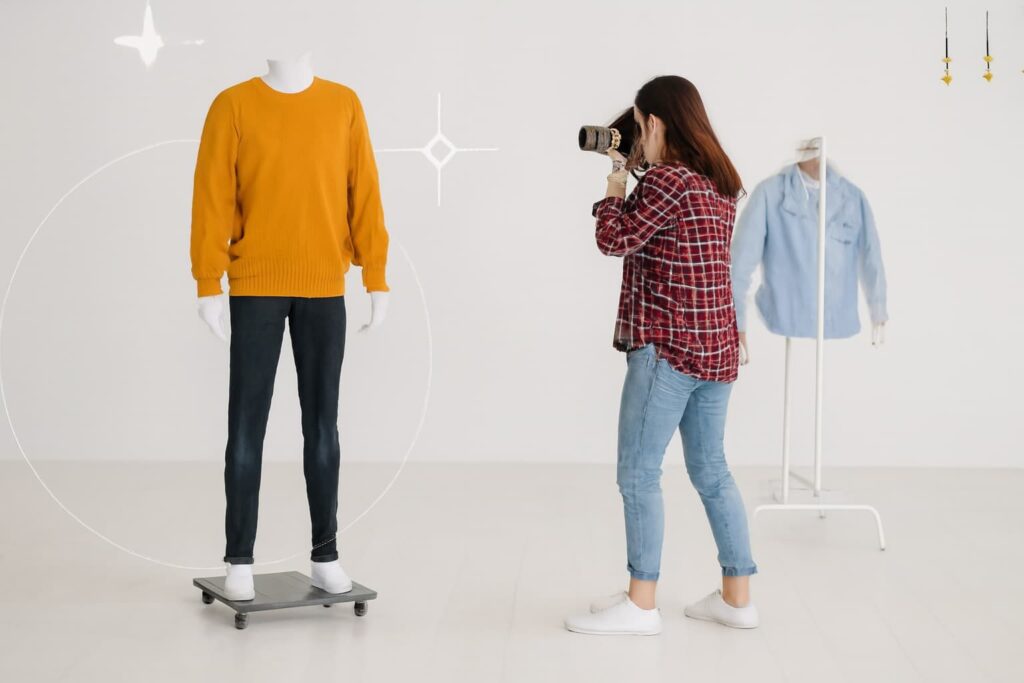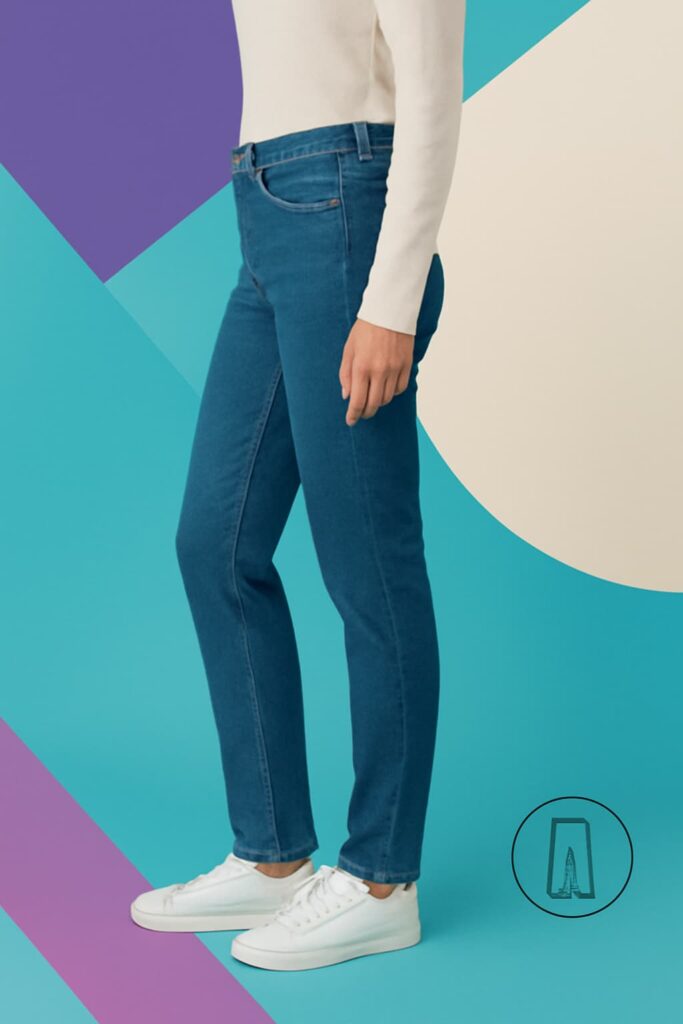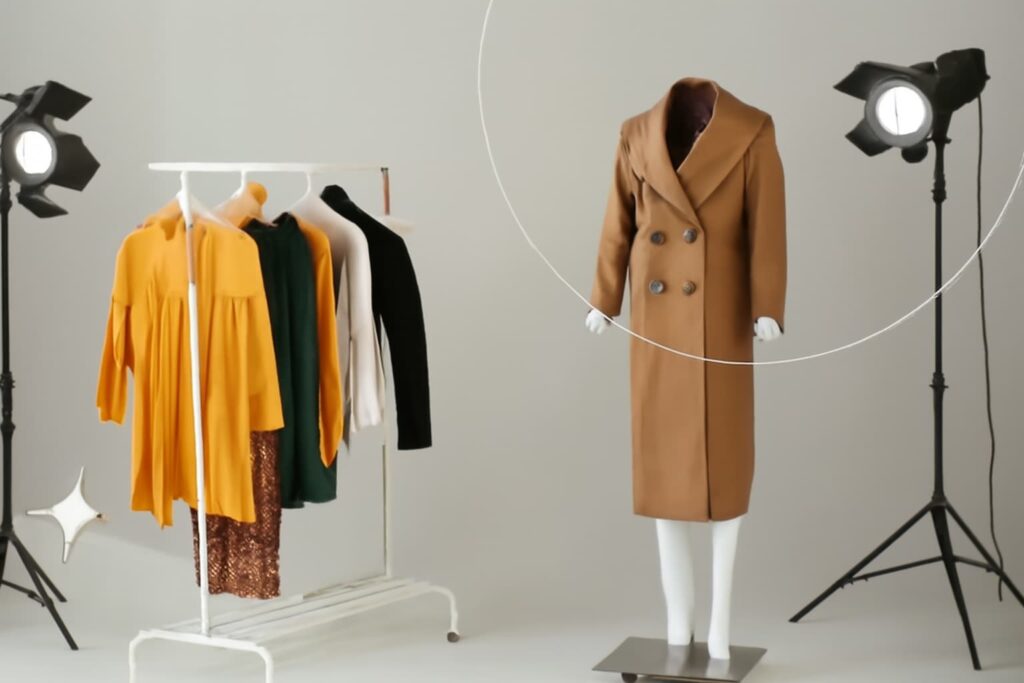Ghost mannequin photography is a standard technique for presenting apparel online. It removes distractions and lets garments appear worn without a visible model or mannequin. One important detail often overlooked is the bottom joint. This small step completes the visual and improves the final image.
What Is the Bottom Joint in Ghost Mannequin Editing?
The bottom joint refers to the inner back side of a garment that is hidden by the mannequin. It’s typically the inside hem or fabric at the lower edge. After photographing the front of a mannequin, the inside bottom is shot separately. The two images are then combined during the editing process. This gives the clothing a natural, filled-out shape without gaps or cutoffs.
It connects the lower hem of the garment, usually taken from a second interior shot, to the main front-facing mannequin photo. This technique is used on long garments, such as dresses, trench coats, and tunics, where the hem is not visible in the front view alone. Without this step, the image appears incomplete.
Why It Matters
Leaving out the bottom joint makes a product image feel incomplete. It can result in a floating collar or an unnatural gap between the front and back. Including the bottom joint:
- Restores full garment structure
- Maintains design accuracy
- Matches customer expectations
These visual details affect perception and help build trust. A complete silhouette shows how the item fits and hangs. It also aligns with professional standards in e-commerce imagery.
Why the Bottom Joint Deserves Focus
Product photos are a key part of e-commerce. Customers rely on them to decide what to buy. For apparel brands, ghost mannequin editing provides a clean way to show shape, fit, and fabric. Many editors focus on the neck joint, but the bottom joint is just as important. It affects how complete and natural the final image looks.
When the bottom hem is not joined correctly, the garment can appear cut off or uneven. This can reduce trust in the product. Proper bottom joint editing prevents that. It helps the garment appear whole, shaped, and worn, without showing the mannequin.
Step-by-Step Editing Process

1. Shoot Two Angles
- Main photo: Garment on mannequin, straight-on view.
- Inner hem photo: Taken from behind or inside, showing the lower back or bottom of the clothing.
Use a white background and flat, even lighting. Shoot at high resolution. The second image must clearly show the hem.
2. Remove the Mannequin Base
Use Photoshop or a similar tool. Mask the shape of the clothing using a clipping path. Remove the mannequin base carefully. Leave a clean edge for the next step.
3. Insert the Bottom Joint
Open the inner hem image. Align it with the main photo. Match fabric lines, folds, and colors. Pay attention to print patterns and seams.
Use layer masks and guides to avoid pixel drift. The hem should look attached and natural.
4. Adjust Lighting and Edges
Match brightness and contrast. Add shadow where needed. Use blur or feathering only at the seam. Avoid sharp changes in tone.
5. Retouch and Clean Up
Check all edges. Fill any gaps with a patch from the garment. Zoom in to refine details, such as missed pixels or color mismatches.
6. Export
Deliver files in PNG or JPEG with a white or transparent background. Save a PSD master file with all layers. The final dimensions should be at least 2500 x 3000 pixels.
Benefits of Bottom Joint Editing in Apparel Sell

1. Accurate Product Display
Shoppers want a full view of what they are buying. A clean hem finish at the bottom shows shape and length. For long apparel, it shows fall and cut.
2. Reduces Product Returns
If buyers can’t see the full back of a garment, they may assume incorrect length or shape. Including the back hem makes the photo clear. This prevents mismatched expectations.
3. Builds Brand Consistency
Apparel listings that follow one image structure look clean and professional. It improves catalog flow. That helps with shopper trust.
4. Cleaner Storefront
Product listings look more consistent. This builds buyer confidence. Amazon, Shopify, and most major platforms accept this format.
Data and Performance Metrics
A ghost mannequin image that includes a correct bottom joint edit can improve product click-through by up to 28%. Services that offer manual edits with a quality control report tend to have higher satisfaction and fewer revision requests.
Prices for this work range between $0.75 to $1.20 per image. Turnaround is usually under 24 hours for under 200 images.
Bulk orders over 500 images may take 48–72 hours and include up to 2 free revisions.
Tools Used by Professionals
- Photoshop Pen Tool
- Layer Masking
- Clone Stamp for Retouching
- Brightness/Contrast Adjustment
- Smart Guides for Alignment
All edits should be done manually. AI-generated edits can miss details and create visible artifacts.
Best Practices
- Use a tripod for alignment
- Stick to a neutral background
- Label your layers for the workflow
- Shoot in RAW to control image quality
- Keep the resolution high for zoom tools
Consistency across your catalog strengthens brand visuals. Skipping the bottom joint introduces imbalance. Every product deserves a uniform, polished presentation.
Final Thought
The bottom joint may be small, but its role in ghost mannequin editing is direct and measurable. A clear structure leads to better images, which support decision-making and increase buyer confidence. Simple steps, accurate results.
FAQ
Do I need a second photo to create a bottom joint?
Yes. You need an image showing the inside or back bottom of the garment to complete the edit.
Can AI tools do this?
No. AI-generated edits often miss alignment and lack control over fabric matching. Human editing remains more accurate.
How long does the process take?
A small batch (under 100 images) takes 12–24 hours. Bulk orders (over 300) may take 2–3 days.
Does the bottom joint apply to all garments?
It applies to shirts, jackets, hoodies, dresses, and any item where the mannequin hides the inner back.
Does adding the bottom joint slow down post-production?
It adds a minor amount of time but improves accuracy and consistency across product photos.


